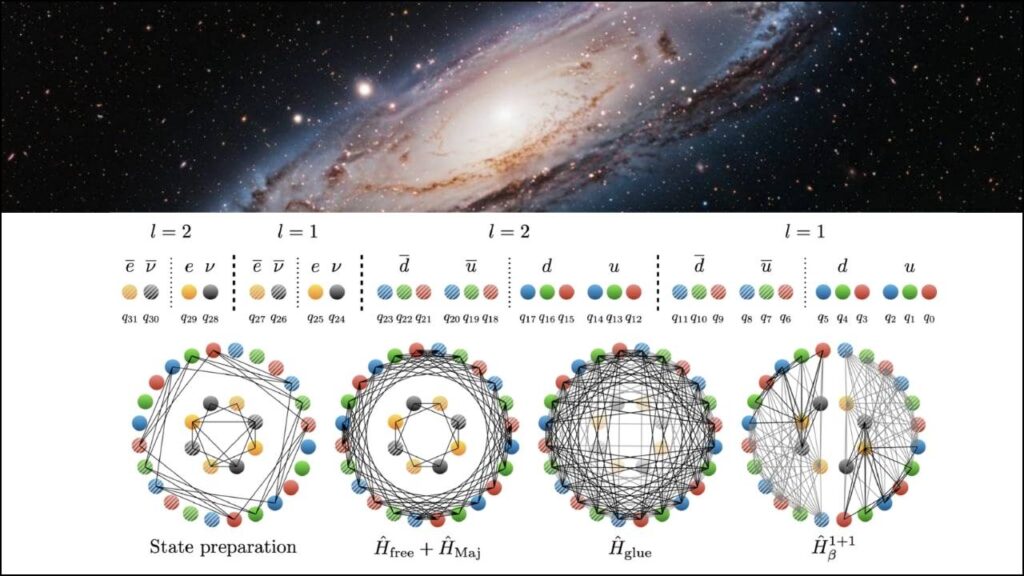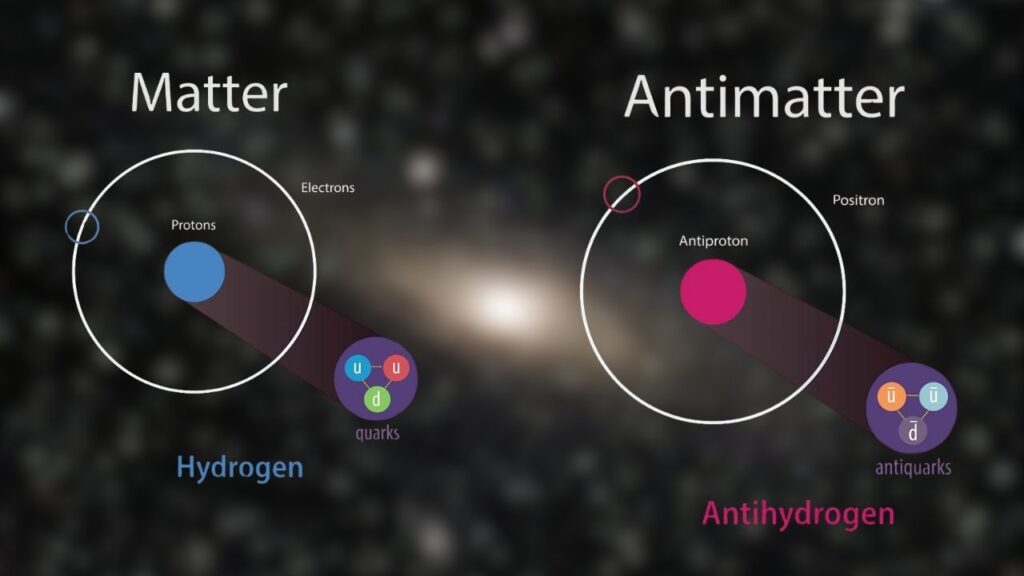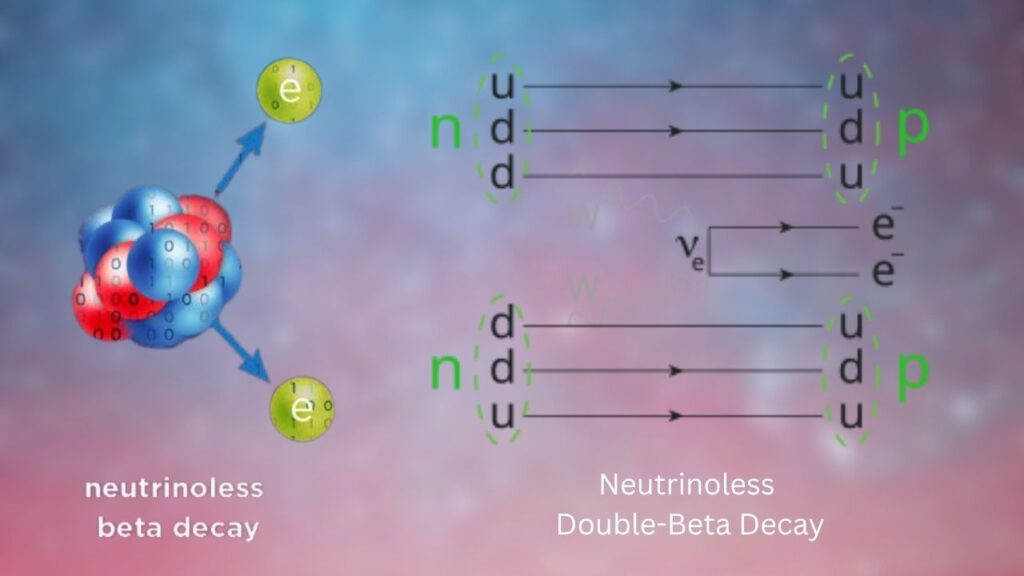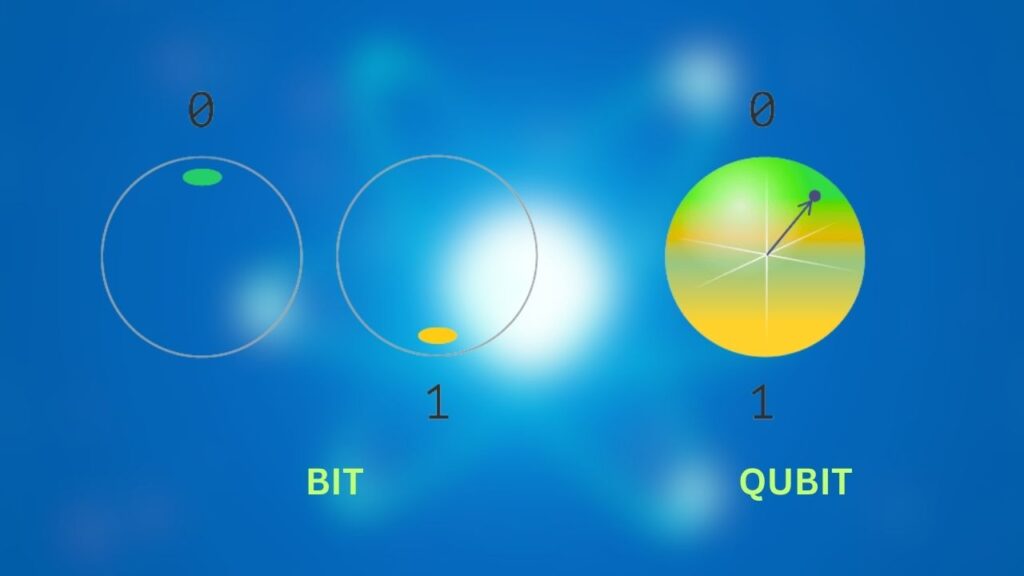Matter–Antimatter Imbalance: Imagine being able to rewind time and watch the very first moments after the universe was born—when everything was a swirling soup of particles. Scientists have always wondered: why is our universe made almost entirely of matter and not its mysterious twin, antimatter? Recently, IonQ and the University of Washington took a giant leap toward answering this question by using cutting-edge quantum computers to simulate a rare process that might have shaped our universe as we know it.

This groundbreaking experiment focused on a phenomenon called neutrinoless double-beta decay—a nuclear process so rare and tricky that it’s never been directly observed in nature. By simulating this process, scientists hope to uncover clues about why the universe is dominated by matter, not antimatter. This is one of the biggest unsolved mysteries in physics, and quantum computers are opening new doors to explore it.
Matter–Antimatter Imbalance
| Topic | Details |
|---|---|
| Experiment | First quantum simulation of neutrinoless double-beta decay |
| Team | IonQ, University of Washington (IQuS), U.S. Department of Energy’s Quantum Science Center |
| Quantum System Used | IonQ Forte Enterprise (trapped-ion quantum computer) |
| Number of Qubits | 32 (plus 4 for error mitigation) |
| Two-Qubit Gates Used | 2,356 |
| Timescale Simulated | Yocto-seconds (10⁻²⁴ seconds) |
| Observed Phenomenon | Lepton-number violation |
| Implications | New insights into matter–antimatter imbalance; advances in quantum-enabled physics research |
| Official Resource | IonQ Official Announcement |
The collaboration between IonQ and the University of Washington marks a major milestone in our quest to understand the universe. By simulating neutrinoless double-beta decay on a quantum computer, scientists have taken a big step toward solving the mystery of the matter–antimatter imbalance. This work not only advances our knowledge of physics but also opens new doors for technology and innovation.
As quantum computers become more powerful, they will help us answer even bigger questions—and maybe one day, help us unlock the secrets of the cosmos.
What Is the Matter–Antimatter Imbalance?
After the Big Bang, scientists believe that equal amounts of matter and antimatter should have been created. Matter is what everything around us—like you, your school, and the stars—is made of. Antimatter is like matter’s mirror image but with opposite properties. When matter and antimatter meet, they annihilate each other, turning into pure energy.

So, if the universe started with equal parts matter and antimatter, why is everything we see today made of matter? Where did all the antimatter go? This is called the matter–antimatter imbalance, and it’s one of the biggest puzzles in science.
Why Is Neutrinoless Double-Beta Decay Important?
Scientists think that certain rare processes might have tipped the scales in favor of matter. One of these is neutrinoless double-beta decay. Normally, when a nucleus decays, it spits out particles and sometimes tiny, almost invisible particles called neutrinos. But in neutrinoless double-beta decay, two electrons are emitted, and no neutrinos appear. This would mean that neutrinos are their own antiparticles—a property called Majorana particles.

If neutrinos are Majorana particles, it would break a rule called lepton-number conservation, which is part of the Standard Model of particle physics. This rule says that the total number of certain particles (called leptons) must stay the same. Breaking this rule could explain how the universe ended up with more matter than antimatter.
How Did IonQ and the University of Washington Simulate the Early Universe?
To study this rare process, the team used a quantum computer—a new kind of super-fast computer that uses the weird rules of quantum physics to solve problems that regular computers can’t handle. In this case, they used IonQ’s Forte Enterprise system, which uses tiny charged atoms (ions) trapped in electric fields as its building blocks.
The scientists mapped the problem onto 32 qubits (the quantum version of a computer bit), with an extra 4 qubits just to help fix mistakes. They designed special quantum circuits to simulate the nuclear process, using 2,356 two-qubit gates—the basic operations that tell the quantum computer what to do. This allowed them to model what happens inside a nucleus on a timescale of yocto-seconds (that’s 0.000000000000000000000001 seconds!).
What Did They Discover?
For the first time ever, the team was able to simulate lepton-number violation in real time on a quantum computer. This is a huge deal because it means quantum computers can now simulate processes that are impossible to see or study directly in nature. The simulation showed clear signs of neutrinoless double-beta decay, giving scientists new clues about how matter might have won out over antimatter in the early universe.
This breakthrough proves that quantum computers can help us understand the most fundamental laws of physics and could lead to new discoveries about the origins of the universe.
Why Does This Matter to Everyone—Even Kids?
You might wonder why anyone should care about something as tiny as a neutrino or as ancient as the Big Bang. But these discoveries help us answer big questions: Where did everything come from? Why does the universe look the way it does? Understanding the matter–antimatter imbalance could also help scientists invent new technologies or even travel to the stars someday.
For kids, it’s a reminder that science is about curiosity and asking questions—even the really big ones.
How Quantum Computers Work: A Simple Guide
Let’s break down how quantum computers are different from the computers you use every day:
- Regular Computers: Use bits (0s and 1s) to store and process information.
- Quantum Computers: Use qubits, which can be 0, 1, or both at the same time (thanks to something called superposition).

- Connectivity: Quantum computers like IonQ’s can connect any two qubits directly, making them much more powerful for certain problems.
- Error Mitigation: Quantum computers are sensitive and make mistakes, so scientists use extra qubits and special tricks to fix errors.
Step-by-Step: How the Simulation Was Done
- Problem Setup: Scientists chose a simple nucleus and modeled its particles (quarks, electrons, neutrinos) on a tiny grid.
- Mapping to Qubits: They assigned each particle to one or more qubits on the quantum computer.
- Quantum Circuits: Special instructions (quantum gates) were used to simulate how particles interact over time.
- Error Mitigation: Extra qubits and clever tricks helped make sure the results were accurate.
- Observation: The quantum computer ran the simulation and showed what happens during neutrinoless double-beta decay, including lepton-number violation.
Why Is This Important for Science and Careers?
This experiment is a big deal for several reasons:
- New Tools for Science: Quantum computers let us study things that are too small, too fast, or too rare to see in real life.
- Career Opportunities: Jobs in quantum computing, physics, and engineering are growing fast. Learning about these topics now could lead to exciting careers in the future.
- Understanding the Universe: Every new discovery helps us piece together the story of how the universe began and why it looks the way it does.
Practical Advice: How to Get Involved
If you’re interested in science, technology, or the mysteries of the universe, here are some ways to get started:
- Read and Explore: Check out books, websites, and videos about quantum physics and the Big Bang.
- Try Coding: Learn the basics of computer programming—quantum computing uses special languages like Qiskit or Cirq.
- Join Science Clubs: Many schools and communities have clubs where you can do experiments and learn from others.
- Stay Curious: Always ask questions and look for answers, just like the scientists at IonQ and the University of Washington.
Quantum Computing Milestone Achieved, Immediately Challenged by Supercomputer
South East Queensland Positioned as Global Hub for Quantum Computing Revolution
Quantum Leap: Understanding the Impact of Quantum Computing on Cybersecurity
FAQs About Matter–Antimatter Imbalance
What is neutrinoless double-beta decay?
Neutrinoless double-beta decay is a rare nuclear process where a nucleus emits two electrons and no neutrinos. If observed, it would prove that neutrinos are their own antiparticles and could explain the matter–antimatter imbalance.
Why is the matter–antimatter imbalance important?
It’s one of the biggest unsolved mysteries in physics. Understanding it could reveal new laws of nature and help us learn how the universe began.
How do quantum computers help?
Quantum computers can simulate processes that are impossible to study with regular computers, giving scientists new ways to explore the fundamental rules of the universe.
Can I use a quantum computer at home?
Not yet! Quantum computers are very complex and expensive, but you can try quantum programming online using platforms like IBM Quantum Experience or Microsoft Azure Quantum.
What careers are there in quantum computing?
Jobs include quantum physicist, quantum engineer, software developer, and research scientist. These fields are growing fast and offer exciting opportunities.






